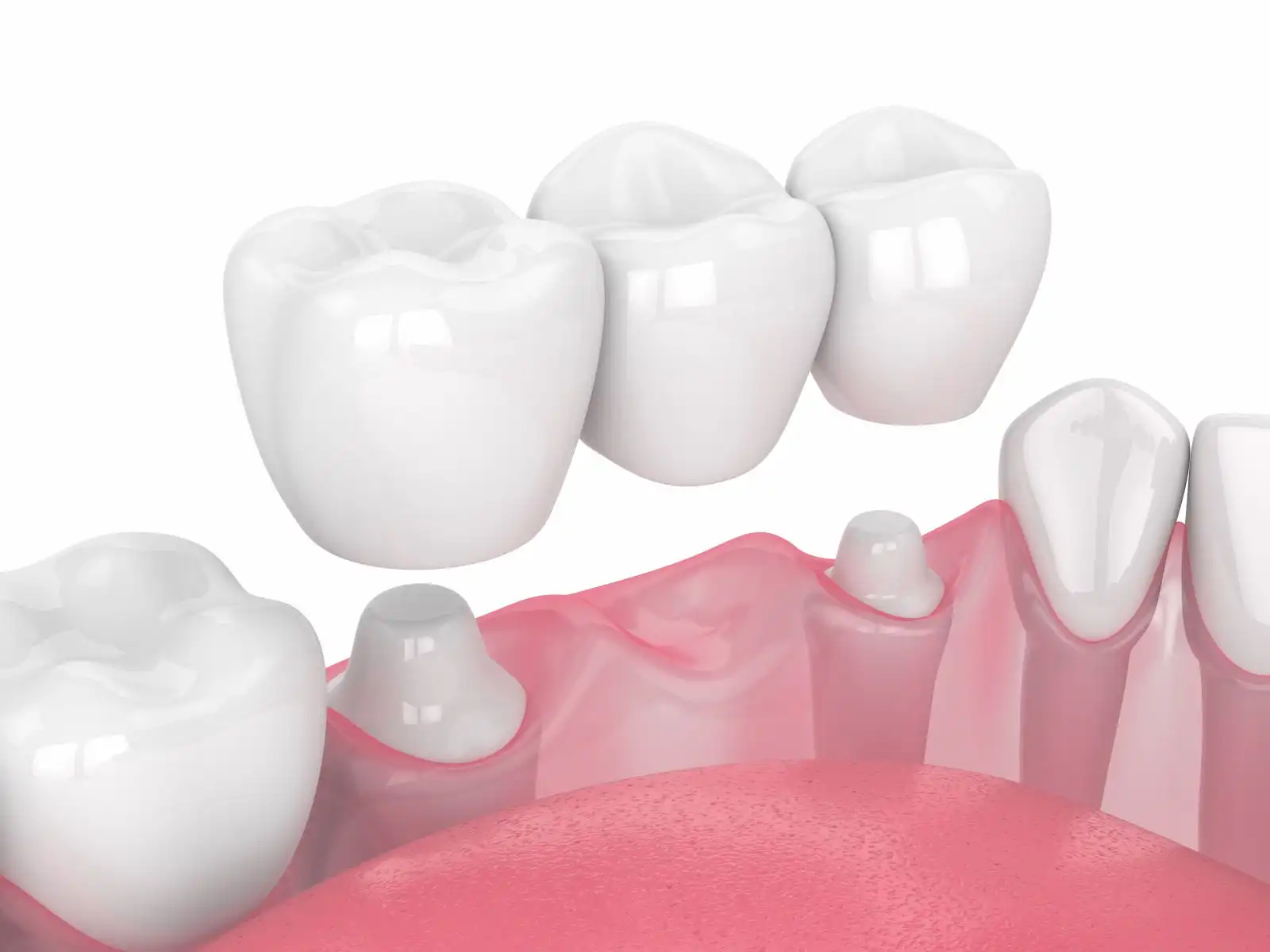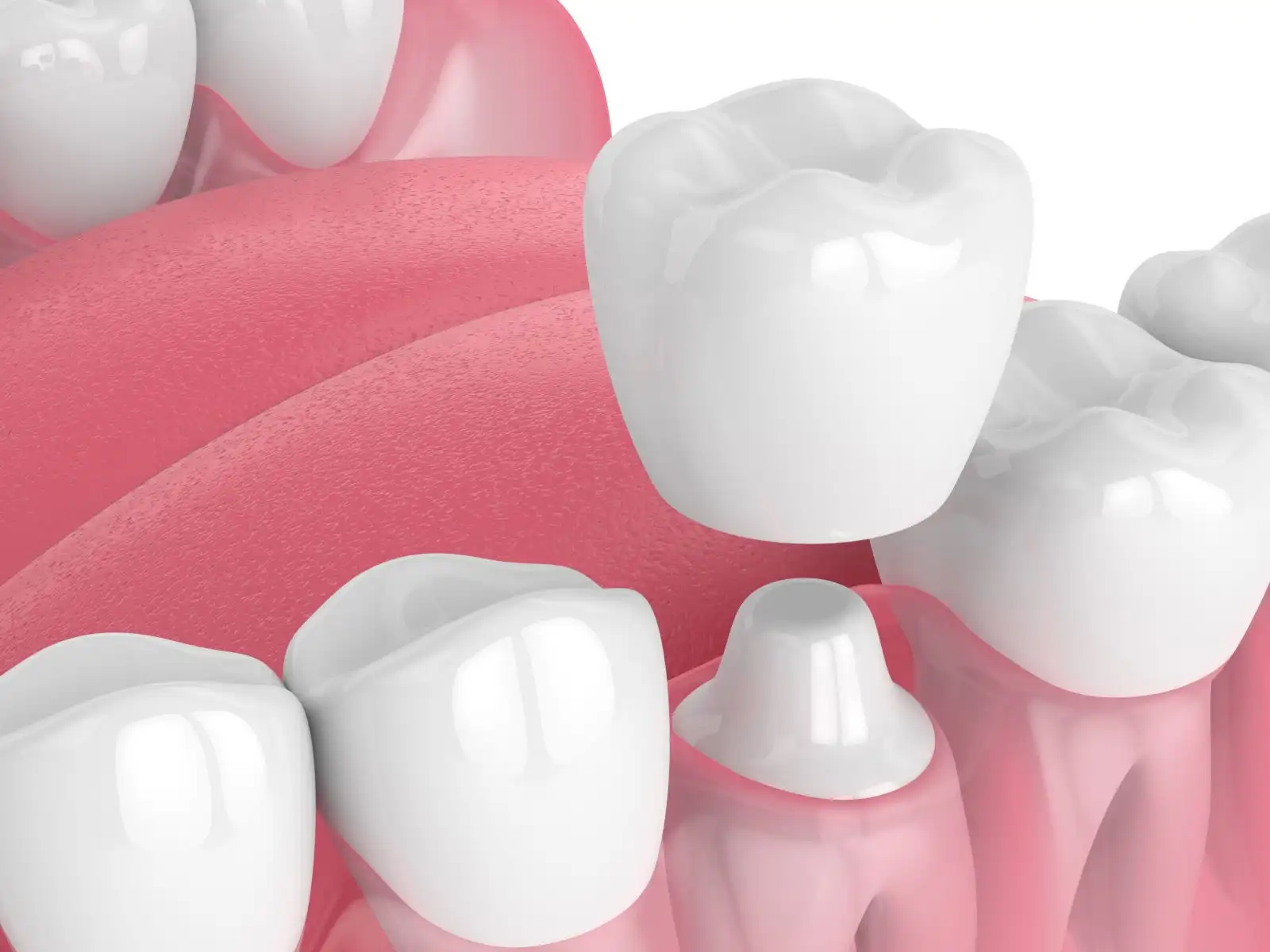
Dental Crowns and Bridges
Crowns and bridges are fixed prosthetic restorations that are permanently cemented onto teeth by the dentist using special dental cements. They cannot be removed at home.
Prosthetic restorations are generally indicated when a tooth or part of a tooth is missing, or when decay has damaged the tooth to a degree where it is still salvageable but can no longer be rebuilt with a filling or inlay/onlay.
Both crowns and bridges are fixed prosthetic restorations fabricated by a dental technician, after which the dentist cements the finished restoration onto previously prepared teeth.
- A crown is primarily indicated for a tooth that is significantly damaged but still internally healthy and externally stable.
- A bridge, on the other hand, can replace one or more missing teeth by “bridging” the gap, or it can be used to connect multiple adjacent prepared teeth. This means that when several damaged or carious teeth are present side by side but do not yet require extraction, this method can provide a highly effective and cost-efficient solution.
Types of Crowns (by material)
- Porcelain-fused-to-metal (PFM) crowns
- Zirconia crowns
Indications for a Crown
A crown is recommended in the following situations:
- When a patient is dissatisfied with the shape or color of their teeth, crowns may be a safe and affordable alternative to veneers.
- When a tooth is fractured but can still be rebuilt with a core build-up or post-and-core, a crown can provide excellent reinforcement.
- For root canal–treated teeth that are structurally compromised, crowns protect against further fractures, which is why this method is so widely used.
Steps in Fabricating a Crown
- Tooth preparation (shaping/grinding)
- Impression taking
- Framework try-in
- Final cementation


Indications for a Bridge
A bridge is most appropriate when:
- one or more teeth are missing, but the adjacent teeth are healthy and able to support the prosthesis
- extraction of one or more teeth is necessary, but the adjacent teeth remain strong and suitable for use as abutments
Many patients choose a bridge instead of a dental implant. Reasons include:
- in some cases, implant placement is not possible at the given site for medical or anatomical reasons, making a bridge the most favorable option
- a bridge is generally more affordable than implantation
Steps in Fabricating a Bridge:
- Preparation (shaping) of the abutment teeth
- Impression taking
- Framework try-in
- Biscuit try-in (raw porcelain trial)
- Final cementation
Fabrication Time
The production time for crowns and bridges is usually 4–8 working days, making them a quick and reliable solution for eliminating tooth loss.
Materials
Both crowns and bridges may be fabricated from metal frameworks coated with tooth-colored ceramic for an aesthetic finish. Alternatively, zirconium oxide crowns can be used, which are also suitable for patients with metal allergies.
Possible Adjunctive Treatments Before Crown or Bridge Placement
- Panoramic radiograph
- Tooth preparation (shaping)
- Root canal treatment
- Tooth extraction


